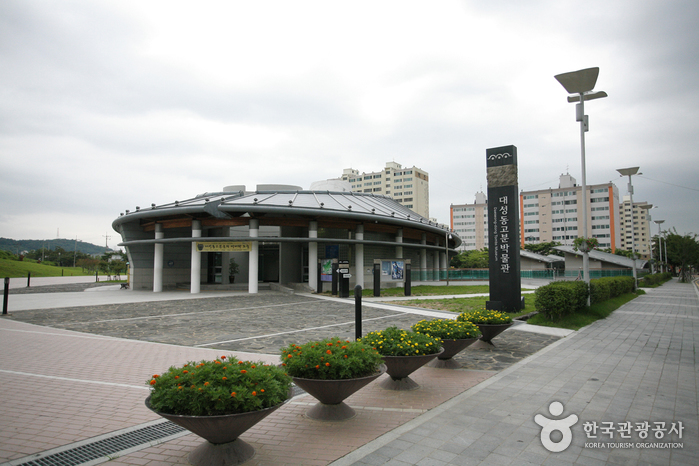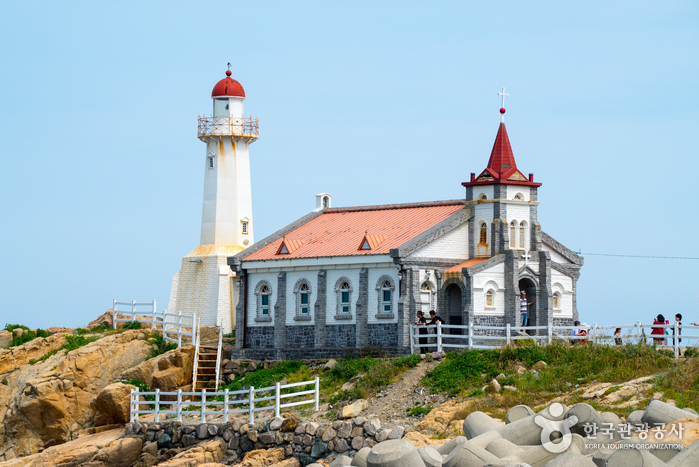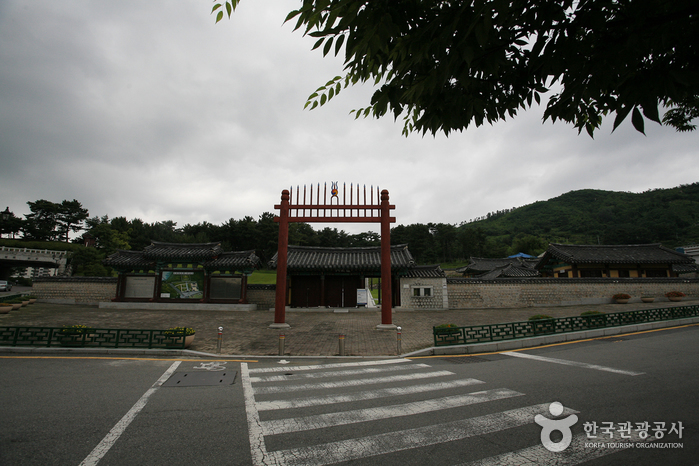Gimhae Astronomical Observatory (김해천문대)
19.7 Km 12405 2022-12-29
254, Gaya thema-gil, Gimhae-si, Gyeongsangnam-do
+82-55-337-3785
Gimhae Astronomical Observatory opened on February 1, 2002 as part of the Millennium Commemorative Project that started in December 1998. It was built to satisfy the general public’s curiosity about the universe and celestial bodies, inspire young people, and give everyone a unique, memorable experience. The observatory is shaped like an egg, in memory of the legend of King Kim Suro, the founder of the Garak Kingdom, according to which the king was born from an egg.
It is said that the queen of King Suro, Heo Hwang-ok, was a princess from the Indian country of Ayuta. Since sophisticated navigation equipment had yet to be invented, it can be assumed that she found her way to the Garak Kingdom by following the stars. It is also said that a prince of the Garak Kingdom built an observatory on the highest point of a mud fortress in Jinrye in order to make astronomical observations. The place is still referred to as Bibidan, which means a place to watch the stars.
These historical facts indicate the stars were very important to the Gaya, an ancient kingdom established mainly in the Gimhae area. The peak of Bunseongsan Mountain, where the observatory is located, offers sweeping views of the entire area of Gimhae. The night sky of Gimhae offers a breathtaking sight.
Blackup Coffee (블랙업커피 양산)
19.8 Km 0 2024-03-27
11 Mulgeumyeok 1-gil, Mulgeum-eup, Yangsan-si, Gyeongsangnam-do
Blackup Coffee, a café with a stunning view of the Nakdonggang River, is known for its signature Haesuyeom coffee (sea salt coffee), a unique blend enriched with natural sea salt and homemade fresh cream. This café has risen to fame for its exceptional coffee taste, a testament to their meticulous roasting process that highlights the qualities of premium beans. Additionally, Blackup Coffee also offers classes for customers interested in learning latte art and pour-over brewing techniques.
Museum of the ancient tombs in Daseong-dong (대성동고분박물관)
19.9 Km 13723 2023-01-02
126, Gayaui-gil, Gimhae-si, Gyeongsangnam-do
+82-55-350-0401
The Museum of the ancient tombs in Daseong-dong displays artifacts unearthed from the four excavations of the Daeseongdong Tumuli. Highlighting often overlooked relics of the Geumgwan Gaya, the museum has three ground-floor exhibit halls and several underground auxiliary facilities. The main exhibits include a life-sized statue of a mounted soldier and a warrior statue, both recreated based on bones excavated from the tumuli of Yean-ri. The museum relies heavily on videos and dioramas to help visitors explore all the museum has to offer.
Ancient Tombs in Daeseong-dong, Gimhae (김해 대성동 고분군)
19.9 Km 8390 2020-04-02
126, Gayaui-gil, Gimhae-si, Gyeongsangnam-do
+82-55-330-3934
The tumuli in Daeseong-dong, located to the east of the Royal Tomb of Kim Suro, reflect the formation and development of the Gaya Era. The Daeseong-dong Tumuli are located in the center of the shell mounds of Hoehyeon-ri, the location of the founding of the Gaya Kingdom according to local legend.
The tumuli relics were excavated by researchers from the Kyungsung University Museum from 1990 to 1992 and were found to be the common burial ground of the dominant class of the Gaya Kingdom. On the hilltops, which were viewed as prime burial places, are the tombs of kings and rulers; on the slopes are the tombs of the lower classes.
A total of 136 tumuli were found in the Daesong-dong area. Further investigation of the tumuli revealed several important and interesting facts. First, from the end of the third century, men and horses were buried alive along with the dead. Also, weapons were bent and buried as well, with many of these artifacts being unearthed among the tumuli. Other materials found in the tumuli such as cylindrical bronze items, pinwheel-shaped bronze items, and jasper items showed that Gaya was involved in trade with Japan. The Daeseong-dong Tumuli is significant in that it gives a glimpse into the political and social structure of the Gaya Kingdom, and the cultural exchange between Korea, China, and Japan.
Jukseong Church (Filming Set) (죽성성당(드림세트장))
19.9 Km 0 2024-04-29
Duho 1-gil, Gijang-eup, Gijang-gun, Busan
+82-51-709-4082
Located in Gijang-gun, Busan, Jukseong Church is a drama set built for the SBS drama "Dream (2009)." The drama aired a long time ago and is forgotten, but this well-made space has become a must-see for travelers visiting Gijang. The inside of the cathedral is operated as a gallery, and visitors can encounter a pleasant surprise when there is an ongoing exhibition. Perhaps thanks to its location in a small fishing village, it retains a unique atmosphere. The seaside landscape is like a painting from the Middle Ages. The white foam breaking over the rocks contrasts with the red roof of the church and catches the attention of those who visit this place at a glance. The place where most people wait in line at Jukseong Church is a photo spot decorated with a picture frame structure. The blue sea and sky in the frame create a beautiful background.
Tomb of Queen Consort of King Suro (김해 수로왕비릉)
20.0 Km 11580 2020-04-04
1, Garak-ro 190beon-gil, Gimhae-si, Gyeongsangnam-do
+82-55-338-1330
Tomb of Queen Consort of King Suro in Gusan-dong, Gimhae is the final resting place of Queen Heo, the Queen Consort of King Suro, the founder of Garak. The tomb dates all the way back to the Gaya dynasty and has been officially designated as Historic Site No. 74. Unlike many other ancient tomb mounds that are raised on flat land, Queen Heo's mound sits high upon a hill. In front of the tomb is Pasa Stone Pagoda, which its stones are known to have come from India.
Together with the Tomb of King Suro, the tomb preservation area was expanded in the 28th year of King Sejong’s reign (1446). Records indicate that the tombs were robbed over a century later during the Imjin War (1592-1598). The current headstone and plaque by the tomb was installed in the Joseon dynasty in the 25th year of King Injo's reign (1641).




 English
English
 한국어
한국어 日本語
日本語 中文(简体)
中文(简体) Deutsch
Deutsch Français
Français Español
Español Русский
Русский